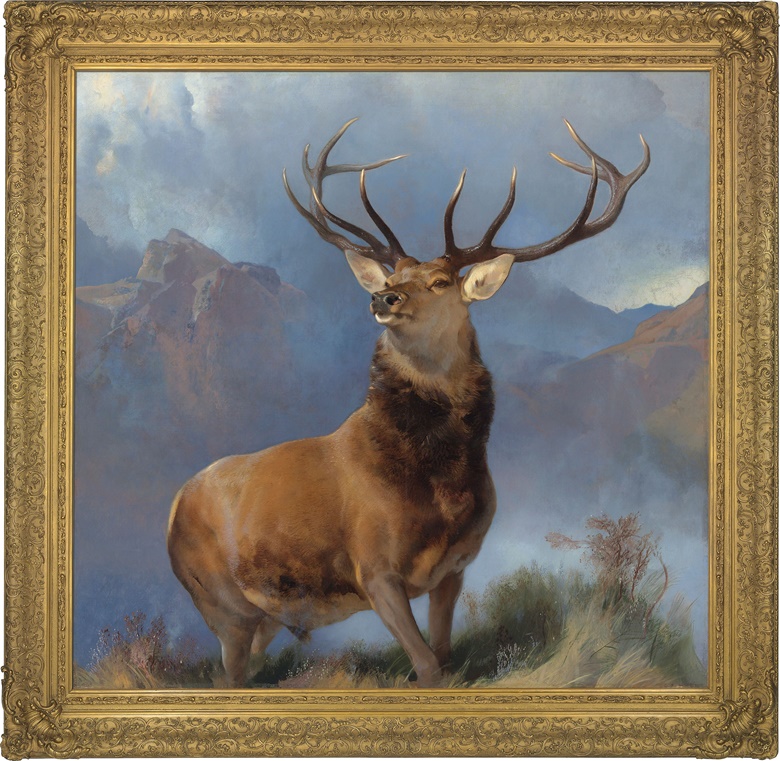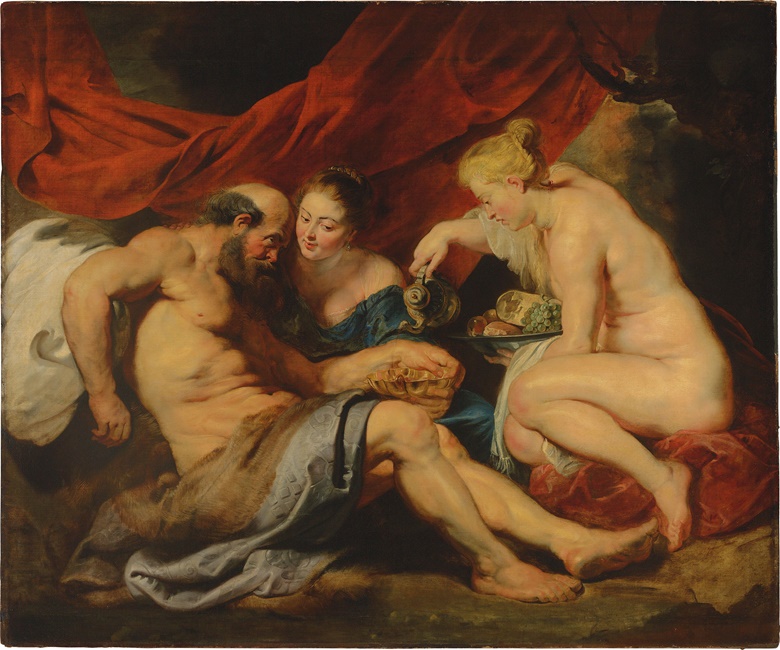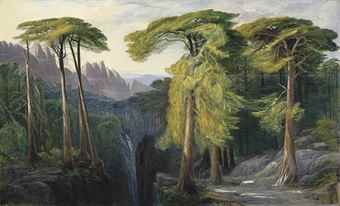Wednesday, November 30, 2016
Christie's Old Master & British Paintings Sale 8 December: Goya, Bellotto, Jordaens, Constable and Lear
At the culmination of Christie’s 250th anniversary year and as a major highlight of Classic Week, The Monarch of the Glen (circa 1849–51, estimate on request) by Sir Edwin Henry Landseer, R.A. (1802-73) will lead the Old Master Evening Sale (8 December 2016), alongside important works by Francisco de Goya y Lucientes, Bernardo Bellotto and Edward Lear. The auction will mark the fourth occasion that The Monarch of the Glen has commanded Christie’s saleroom, having last been offered precisely a century ago, in 1916.
The painting is one of the most celebrated works of British art and an icon of 19th-Century European painting. The Monarch of the Glen was originally commissioned in 1849 for the Refreshment Room in the House of Lords. It presents a majestic portrait of a stag posed before a Scottish mountain landscape, monarch of all he surveys, and is realised with Landseer’s complete knowledge of anatomy and texture. The work will be exhibited at Christie’s New York (4-15 November 2016) and Hong Kong (24-28 November 2016), before being on view in London (2-8 December 2016) during Classic Week.
John Stainton, Deputy Chairman of Christie’s Old Master and British Paintings Department: “Following this year’s record-breaking Old Master sales which include Rubens’s ‘Lot and his Daughters’ and, via private treaty, two Rembrandt Portraits and the iconic ‘Armada Portrait’, there is perhaps no more fitting a conclusion to our 250th anniversary than the return of Sir Edwin Landseer’s ‘The Monarch of the Glen’ to Christie’s King Street. The sales in 1884 and 1892, prompted Landseer to become known as the ‘king of the salerooms’ and in 2016 Landseer’s masterpiece will lead Christie’s December Classic Week.”
SIR EDWIN HENRY LANDSEER, R.A. (LONDON, 1802-73)
The Monarch of the Glen was originally commissioned in 1849 as one of three works planned for the Refreshment Room in the House of Lords and was exhibited at the Royal Academy summer exhibition of 1851. The work was purchased from the artist by the sportsman Lord Londesborough for 350 guineas, it was then offered at Christie’s on three occasions; first by his widow, Lady Otho Fitzgerald, in 1884 for 6,200 guineas; then again in 1892 for 6,900 guineas, with other notable works by the artist that had been acquired by H.W. Eaton, Lord Cheylesmore; and lastly exactly one century ago, in 1916, when it was bought by Sir Thomas Dewar, of John Dewar & Sons, one of Scotland's largest whisky companies.
Inspired by his visit to Sir Walter Scott at Abbotsford in 1924, Landseer spent much time hunting and shooting in Scotland, where he was a popular guest of his wealthy patrons and the royal family. Landseer began painting narrative scenes, vivid landscape sketches, and deer subjects for which he would become famous. His artistic vision was carefully considered, reflecting his exhilaration and deep connection with nature, as well as his romantic notion of life and sport in the Highlands. In The Monarch of the Glen, Landseer elevates animal painting to high art, creating a grandiose canvas celebrating the splendour of both the stag and the landscape it inhabits.
OLD MASTER HIGHLIGHTS
Clementine Sinclair, Head of Christie’s Old Master Evening Sale: “The Old Master Evening Sale brings together a remarkable array of works from some of the most sought-after artists in the European tradition. From Jordaens and Bellotto to Goya and Landseer, the exceptional line-up offers global collectors a number of important works, many of which have outstanding provenance and are presented for sale for the first time in several generations.”
Further notable highlights of the Old Master Evening Sale include the sketch by Francisco de Goya y Lucientes (1746-1828) of A Woman with two Boys by a fountain (estimate: £4,000,000-6,000,000) from the Thyssen-Bornemisza collection. This beautifully-preserved work is closely associated with the most important Spanish Royal commission of its time when, following his appointment as Painter to the King in June 1786, Goya was commissioned to produce large painted cartoons for tapestries to decorate the dining room of the heir to the throne, Carlos, Prince of Asturias, in El Pardo Palace, Madrid. Carlos III had requested designs of light-hearted subjects and a principal theme of the Four Seasons was agreed. The full-scale cartoons are all preserved in the Prado, Madrid, while the smaller sketches for these designs are dispersed in major international museums including, the Museo Lazaro Galdiano, Madrid; the Sterling and Francine Clark Art Institute, Williamstown; the Art Institute of Chicago; and the Prado, Madrid. This sketch and only one other from the series of six principal designs
(Spring, or The Flower Seller) remain in private hands. The rapid brushwork, luminous palette and numerous pentimenti in this sketch are remarkably well preserved, revealing Goya’s evolving design for the final cartoon. In the end, as a consequence of the death of Carlos III the following year, the tapestries woven from Goya’s designs were never hung in El Pardo and the sketches remained in Goya’s possession. This sketch was acquired from the artist in 1798 by the Duke and Duchess of Osuna.
Following the landmark sale of Sir Peter Paul Rubens’s Lot and his Daughters for £44.9 million earlier this year, this season Christie’s will present a work by another celebrated Northern Baroque artist, Jacob Jordaens (1593-1678), who succeeded Rubens as the leading painter in Antwerp following the latter’s death in 1640.
The Holy Family with an angel (circa 1625-6, estimate: £500,000–800,000) is an important and intimate early work by the artist, and a subject that Jordaens frequently returned to throughout his career. This painting was completed at a time when Jordaens produced some of his finest work, including the monumental Saint Peter Finding Money in the Mouth of a Fish (Copenhagen, Statens Museum for Kunst), and it was these works which established his reputation. The composition is articulated with expressive gestures and glances. Christ’s fate is made explicit by the rosary clasped in His hand and the grapes held by the angel as a symbol of the Eucharist. Jordaens may have used portraits of his son, Jordaens the Younger, and wife, Catharina, for the figures of Christ and the Virgin in this picture. His use of realistic models, the rustic presentation of religious subjects and his dramatic use of light and shade point to Caravaggio’s influence.
Bernardo Bellotto (1721-80) will be represented in the sale with The courtyard of the Fortress of Königstein with the Magdalenenburg (circa 1760; estimate: £2,000,000–3,000,000), an impressive and rare view of the Saxon castle, once in the collection of the Counts Potocki, Lańcut Castle, Poland.
Having established himself as an artist of the highest order, being paid more than any previous Court Painter, Bellotto was called to Dresden in 1747. Here he began to work on his renowned series of views of the city for Augustus III, Elector of Saxony and King of Poland (1696-1763), along with full-scale replicas for the chief minister, Graf Heinrich von Brühl (1700-63). The Elector also commissioned five views of his castle at Königstein, which were never delivered to Augustus III and were later dispersed. This painting depends on a picture from the original series, which is now in Manchester City Art Gallery. Bellotto remained in Dresden until 1758, when he travelled to Vienna and Munich, before returning to Dresden in 1761. His celebrated renderings of the major capitals of Northern Europe, including Dresden, Vienna, Munich and Warsaw, hold an important place in European topographical painting.
The sale also includes a spirited en plein air sketch of Beaching a Boat, Brighton (estimate: £500,000 – 800,000) by John Constable, R.A. (1776-1837), which was used in the preparation for
one of the artist’s famed ‘Six-Footers’ showing Chain Pier, Brighton, exhibited at the Royal Academy in 1827 (London, Tate Britain). The sketch was kept in the artist’s studio until his death in 1837 when it passed to his daughter Isabel, before being offered for sale at Christie’s in 1892. It later formed part of the distinguished Chéramy and Hatvany collections, when it was heralded as anticipating Impressionism in its truth to nature and in the spontaneity of its brushwork.
Edward Lear’s (1812-88) monumental The Forest of Bavella (circa 1878-88; estimate: £600,000-800,000) is also among the highlights. The work is the largest of only three known oil paintings that he executed of the forests of Southern Corsica following his expedition to the island during the winter of 1867-68. It illustrates Lear’s unparalleled skill at capturing a sense of grandeur and an epic depth of scale, with soaring pines, and cavernous ravine set against a mountainous backdrop. Using a combination of vivid, quickly-applied brushstrokes with carefully delineated details, Lear demonstrates his supremacy as a topographical draughtsman.








